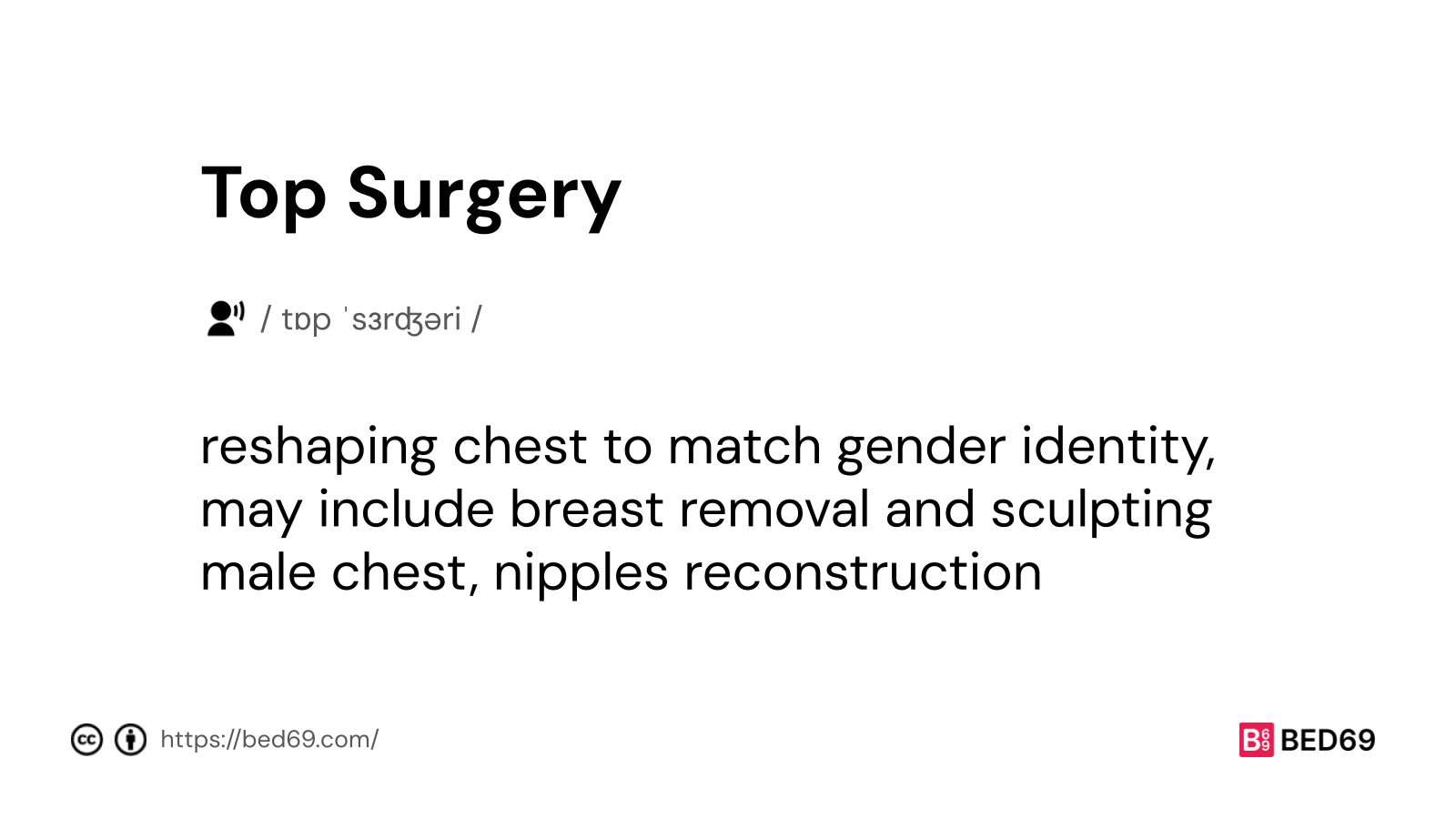What is Top Surgery?
Top Surgery involves reshaping the chest to match one’s gender identity. For transgender men, this can mean removing breasts and sculpting a male chest. It may also involve reconstructing nipples and areolas. Some opt for only top surgery, while others combine it with gender reassignment procedures.
Top Surgery pronunciation: / tɒp ˈsɜrʤəri /

How does Top Surgery Affirm Gender Identity
Top Surgery plays a significant role in affirming a person’s gender identity. For transgender men, this procedure aligns their physical appearance more closely with their internal sense of self. By removing breasts and reshaping the chest to have masculine contours, individuals feel more comfortable and authentic in their bodies. The reconstruction of nipples and areolas can further enhance this alignment with their gender identity.
Some individuals choose to undergo top surgery alone, while others combine it with additional gender-affirming procedures for a complete transition. Overall, top surgery serves as a crucial step in helping transgender individuals achieve a physical presentation that reflects their true gender identity.
Common Techniques and Recovery Process
Top Surgery typically involves two main techniques: double incision and periareolar. In the double incision method, horizontal incisions are made on the chest to remove breast tissue, while in the periareolar technique, incisions are made around the areola to remove excess tissue. Recovery time varies but usually includes wearing a compression garment and limiting physical activity for a few weeks.
After surgery, it’s normal to experience swelling, bruising, and discomfort. Following post-operative care instructions is crucial for proper healing. Many individuals can resume light activities within a few weeks, but strenuous exercise should be avoided for a longer period. Regular follow-up appointments with the surgeon are necessary to monitor healing progress and address any concerns.
It’s important to have a support system in place during recovery as emotional support can be as crucial as physical care. Each person’s recovery journey is unique, but with proper care, patience, and adherence to post-operative guidelines, most individuals can expect a successful outcome and improved alignment with their gender identity.
Explore other interesting terms:
